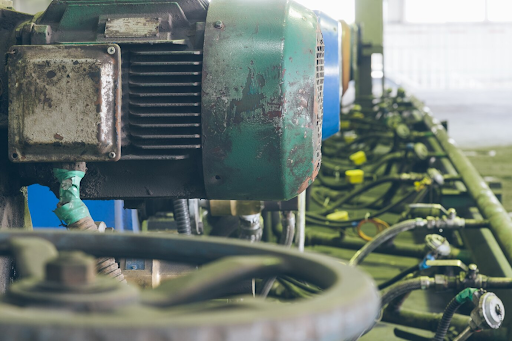
VFDs, or variable frequency drives, have become a staple when paired with pumps, fans, conveyor belts, and various machines. They are widely used across various industries, including manufacturing, construction, and automation. Here, we will look at what variable frequency drives do, their applications, and the benefits of using them alongside all manner of AC motor-powered equipment.
About Variable Frequency Drives
Variable frequency drives are a type of motor control (also known as a VFD controller) that converts direct current (DC) into variable-frequency alternating current (AC), regulating and improving the output of power to AC motors. By managing the speed of AC motors through this voltage control, they can be used to add precision and control to all manner of AC motor-powered applications
Where Are Variable Frequency Drives Used?
Anywhere that getting the most out of your AC motor could improve operations, VFD controllers can have a role to play. They can be used, for instance, to improve the performance and improve the power supplied to older AC motors. They are frequently used to ensure more precision with servo systems, VFD-based control systems, VFD-fed inverters for traction applications (like trains), power plants, compressors or pumps, CNC machine tools, and much more.
Many different tools and machines run on AC motors throughout a wide range of industries, meaning that VFD controllers have a very wide range of applications, as well.
The Benefits of Using VFD Controllers
Understanding the basic concept of how variable frequency drives work can help you start to see the various ways it could be used to improve the AC motor-driven tools in your organization and setup. However, even then, it’s easy to underestimate the benefits that they can bring. As such, here are a few to keep in mind:
Improving power to older AC motors. Attaching a VFD to a machine powered by an older AC motor can improve performance compared to the original equipment, allowing you to reach new operational productivity levels.
Improved energy efficiency. You can reduce your energy expenses by adjusting the energy consumption related to your AC-motor-powered machines. By controlling motor speed, you also control the energy that goes into the motor.
Managed startup current. By initiating motors at lower voltage and frequency, you can gradually start them up, which can improve their lifespan, reducing wear and tear over time
Improved safety. By limiting and controlling the torque of AC motors, you can ensure that they do not exceed safe limits, which can ensure safer machine operation and prevent damage.
Preventing voltage sags. Activating large AC motor lines can cause voltage sags, leading to drops in power supply, which can limit productivity. VFDs allow you to gradually up your voltage supply, mitigating these sags.
Consider implementing VFD controllers in your applications
Considering the above benefits, it should be easy to see why the variable frequency drive has become so popular across various industries. The level of improvement it can offer AC-motor-driven machinery and tools can lead to real improvements in your business, so consider using them today.
Interesting Related Article: “Working Principle of DC Motor: A 2022 Complete Guide“
